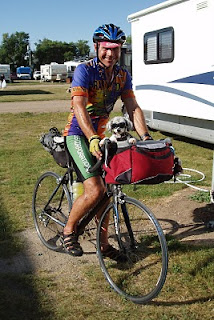
The air in Kamloops, BC Friday morning was thick with the haze of wildfires burning in parts of the province. We thought that we’d be following that haze all the way into Vancouver due to a fire in one of its suburbs, but were happy to see the air clear by mid day as we made our way south on route 99. The landscape around Kamloops is stark compared to what we had seen in the Rockies over the last few days, but returned to the dramatic snow-capped peaks as we neared Whistler and Squamish. 

Route 99 is also known as the "Sea to Sky Highway" and is full of twists and turns and dramatic elevation changes (yes, that sign says "13%" grade!)

The section north of Whistler is in questionable shape in places, but the portion from Whistler on south to Vancouver was repaired and improved in preparation for the 2010 Winter Olympics.
Speaking of Whistler in the context of the Olympics, how could we stop there without a family picture in front of the 2010 Olympic rings?
The last surprise of the day as we neared Squamish was a breathtaking view of the Tantalus mountain range to the west of us – although only 2000 meters or less in height, the mountain tops are still covered with a thick mantle of snow (NOT a glacier).


Route 99 is also known as the "Sea to Sky Highway" and is full of twists and turns and dramatic elevation changes (yes, that sign says "13%" grade!)

The section north of Whistler is in questionable shape in places, but the portion from Whistler on south to Vancouver was repaired and improved in preparation for the 2010 Winter Olympics.
Speaking of Whistler in the context of the Olympics, how could we stop there without a family picture in front of the 2010 Olympic rings?

The last surprise of the day as we neared Squamish was a breathtaking view of the Tantalus mountain range to the west of us – although only 2000 meters or less in height, the mountain tops are still covered with a thick mantle of snow (NOT a glacier).















































